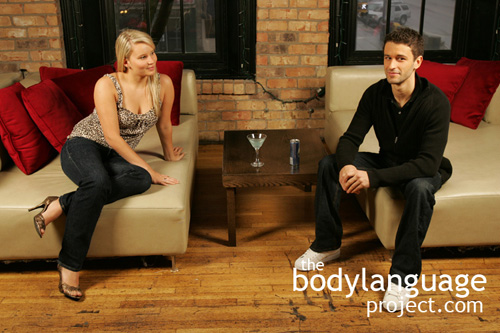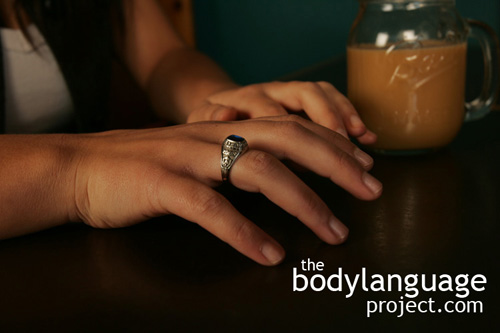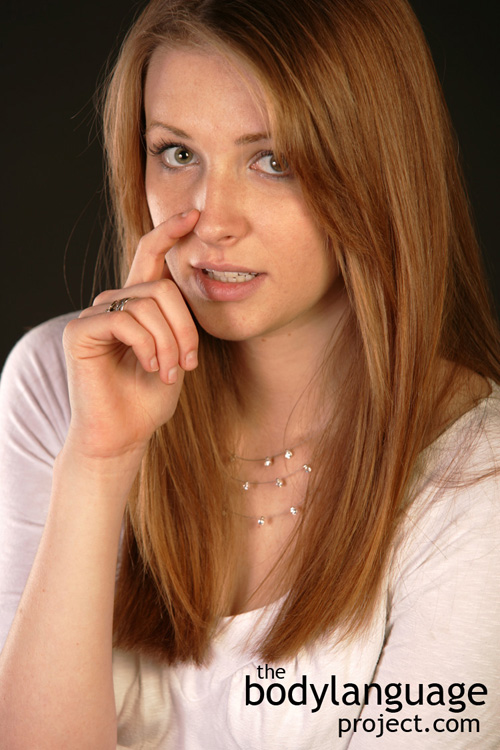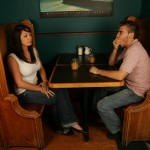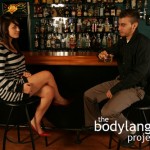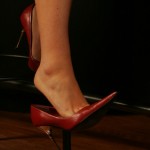We have covered many signals of comfort and discomfort throughout the book and have even eluded to their use in lie detection. To simplify things, I wanted to take the time to cover the cues we can use to detect lying as it relates to comfort and discomfort. We have seen how open and closed language can signal a desire to allow access to the body. Ventral displays shows that a person is open and trusting of someone and this sort of response is difficult when we feel we are hiding emotions. Comfort is displayed through proximity and people do this by moving their torsos closer or leaning inward rather than away and will remove objects that impede their view so as to establish more intimacy.
Comfortable people will hold their bodies loose rather than rigid, and their body will move with fluidity. They will gesture with their speech instead of freezing instantly or awkwardly, called “flash frozen.” Sometimes people will slow to catch their thoughts, but this will be obvious to the body language reader and will come at appropriate times and in context when thought is actually required to produce accurate answers. Comfortable people mirror others around them instead of avoiding synchrony. Their breath rate will be similar and they will adopt like postures instead of showing differences.
Bodies show discomfort by increased heart rate, breath rate, sweating, a change in normal colour in the face or neck, trembling or shaking in the hands lips, or elsewhere, compressing the lips, fidgeting, drumming the fingers and other repetitive behaviours. Voices often crack when under stress, mouths might dry up producing noticeable swallowing, “hard swallows”, or frequent throat clearing. Liars might use objects as barriers. They might hold drinking glasses to hide parts of their face or use walls and chairs while standing to lean against to gain support. Liars might engage in eye blocking behaviours by covering their eyes with their hands or seem to talk through them or even squint so as to impede what is being said from entering their minds. The eyes might also begin to flutter or increase in overall blink rate showing an internal struggle.
We’ve hit on the fact that stress creates nonverbal language such as preening to show detachment from a conversation (picking lint), energy displacement gestures such as scratching the body or rubbing the neck or wiping the side of the nose. Palm up displays show that a person has some doubt, and indicates a desire for other to believe them while palm down displays show confidence and authority. Microexpressions can also be particularly revealing since they happen instantaneously and subconsciously. Watch for movements that happen first especially if they are negative in nature as these are more honest than positive body language. Positive language is used by people to appear more in control and polite instead of appearing vulnerable. Fake smiles are an excellent example of an expression that can sometimes be put on to appear to disguise stress. We know smiles are faked when they seem to last for much longer than what would be considered natural.
Lack of touching, or touch reduction also signals discomfort and a divergence of ideas. When people’s ideas differ they find it hard to come close to others as part of the natural fear response. Head movements that are inconsistent with speech such as slightly nodding affirmatively though making a denial or vice versa, or delaying head nodding until after speech is made such that speech and gestures lack synchrony can give liars away. When gestures are done out of sync they tell us that a person is adding the gesture on as support for their statement. The entire affair appears to be out of the normal order of flow in communication which liars can often do. When affirmative nodding happens during denial statements such as nodding “yes” while saying “I did not do it” usually happens very subtly, but is obvious to the conscious observer. Keep in mind while reading these cues that they do not indicate lying per se, but rather indicate discomfort and stress. The job of the body language reader is to decide why a person is stressed. Are they stressed because they are being put on the spot, because they fear being mislabeled, or because they are actually telling lies?

